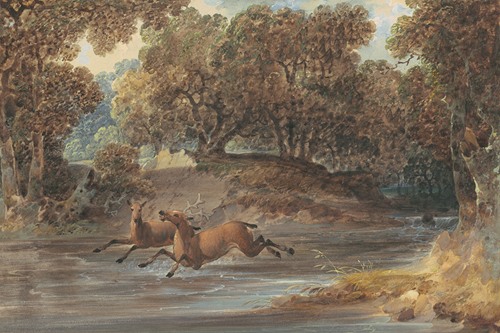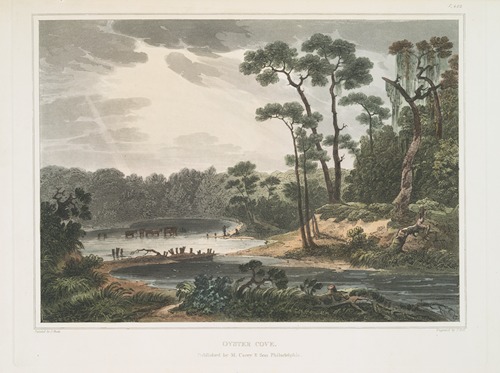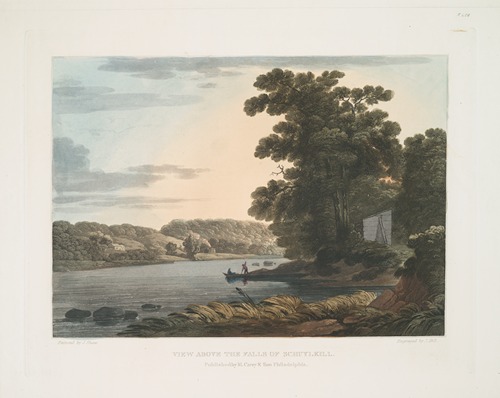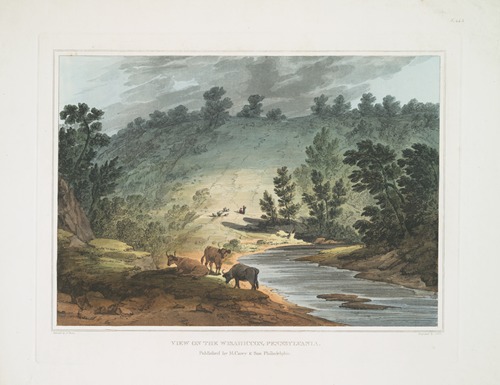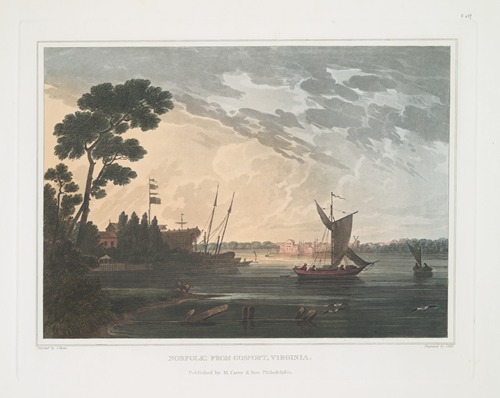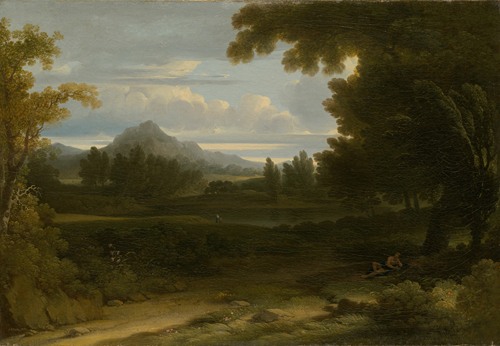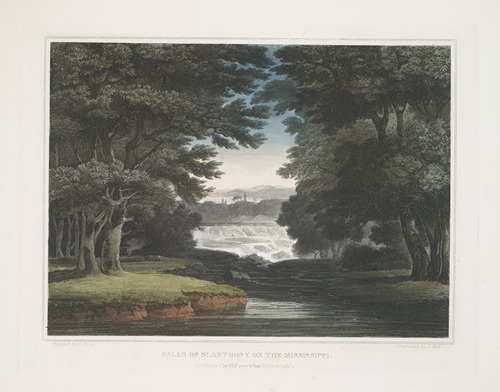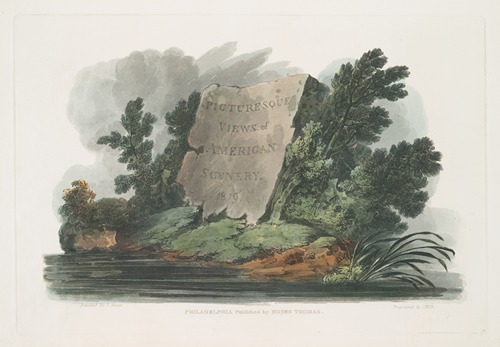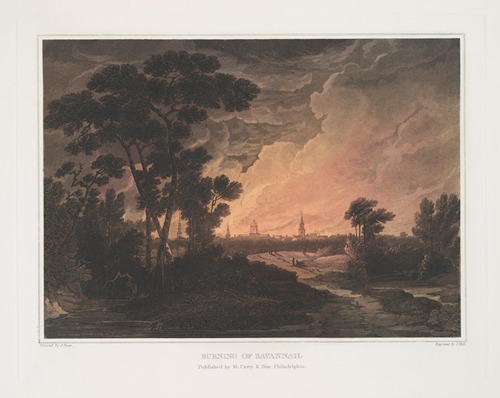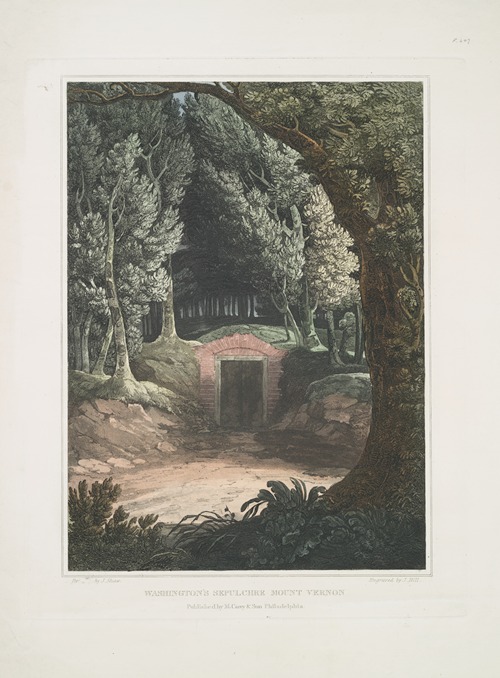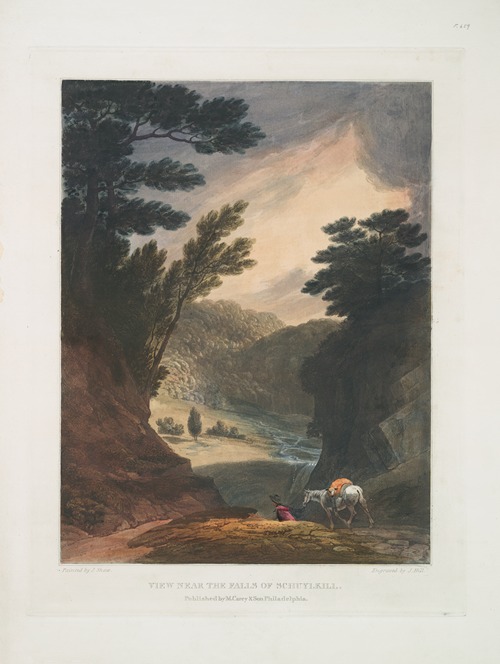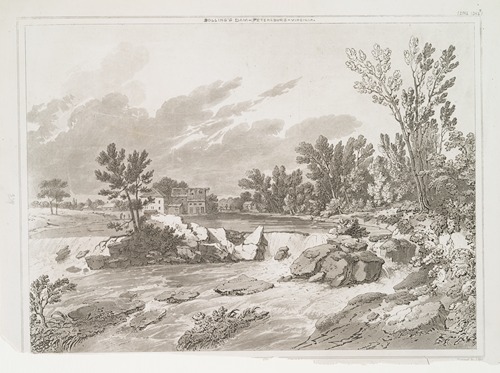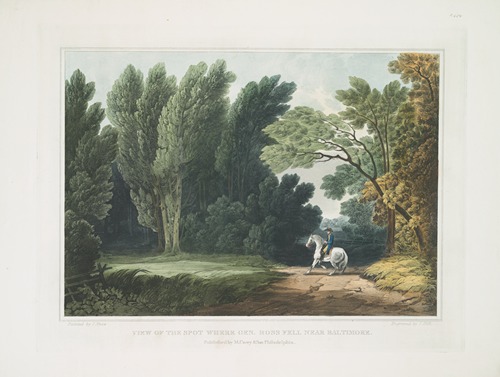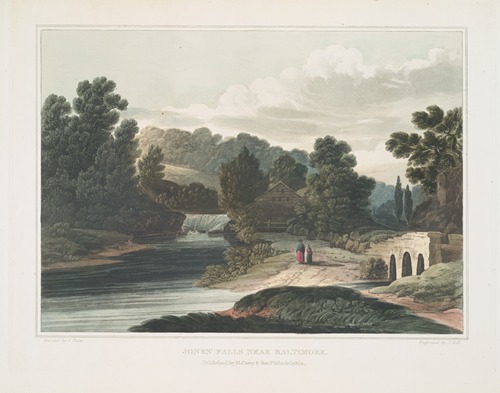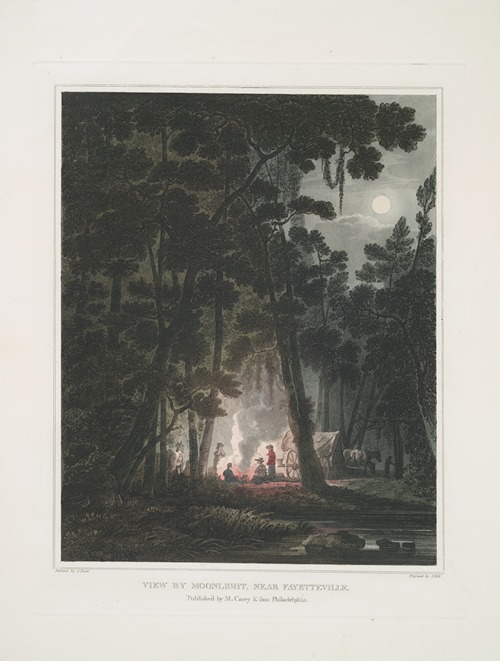
Joshua Shaw was an English American artist and inventor.
Joshua Shaw was born in Billingborough, Lincolnshire, England in 1776 and was orphaned at the age of 7. To survive he worked for a local farmer as a bird scarer. During the three years he spent doing this work he discovered his artistic talent and began drawing the animals he encountered. After his mother remarried Shaw worked for his stepfather's plumbing and glazing business, and later as a mail carrier.
At the age of 16 Shaw painted his first work: 10 commandments in St Michael's Church. His master, jealous of Shaw's skills, sent him to Manchester to work as a foreman. Shaw was able to find purchasers for his work and emerged from obscurity, traveling to London where his paintings attracted many wealthy clients.
Shaw emigrated to the United States in 1817 and by 1819 settled in Philadelphia, where he established himself as an artist. In 1820 he collaborated with John Hill, an aquatint engraver, on a collection of large folio prints titled "Picturesque Views of American Scenery." Shaw provided the paintings, which Hill reproduced as prints.
Shaw's landscape paintings were picturesque in style, a logical result of his English training. His landscapes typically included "a dark foreground, generalized trees or hills framing the composition in the foreground and middleground, a stream or lake, and distant hills. All of these elements are a direct influence of Claude Lorraine's 17th-century idealized landscapes of the Roman countryside." Claude Lorraine, in turn, was an influence on 18th and early 19th century British landscape painters.
Although fellow artist William Dunlap called Shaw "an ignorant, conceited English blockhead," he participated actively in the cultural life of his adopted city. He helped promote the Artists' Fund Society of Philadelphia, established in 1834, and was instrumental in founding the Artists' and Amateurs' Association of Philadelphia in 1839. He also exhibited actively at the Pennsylvania Academy of the Fine Arts.
By 1843 Shaw retired to Bordentown, New Jersey, northeast of Philadelphia. In his retirement he sold few paintings and died in poverty in 1860.
